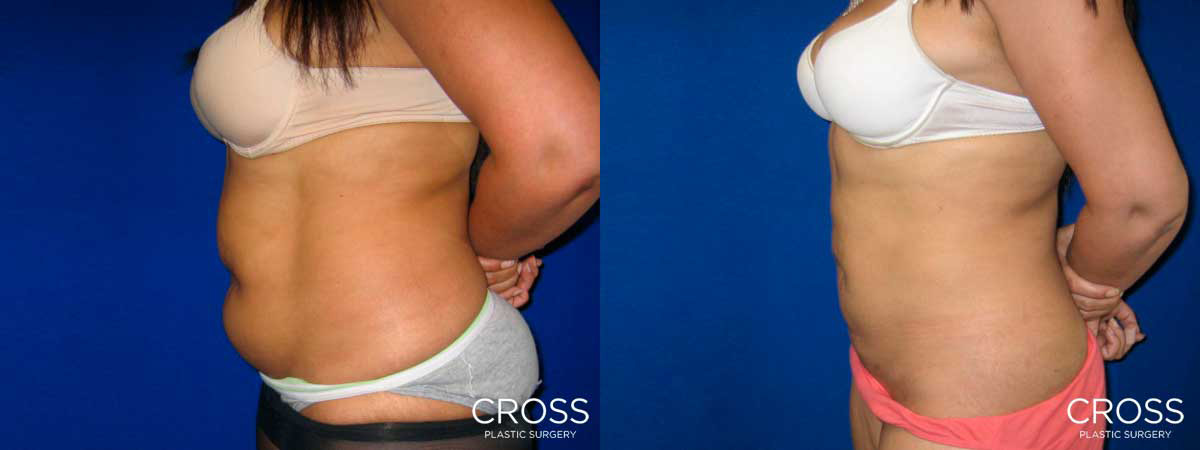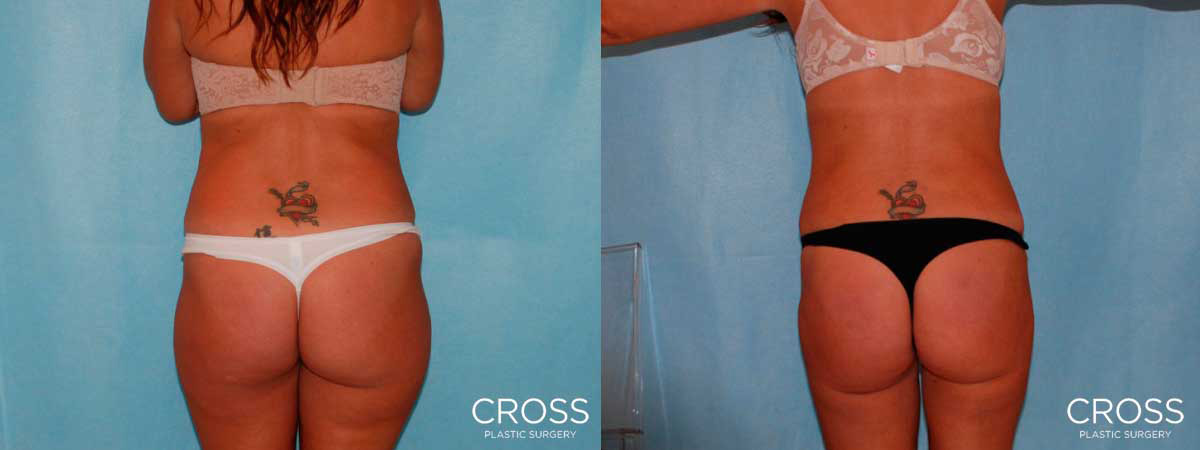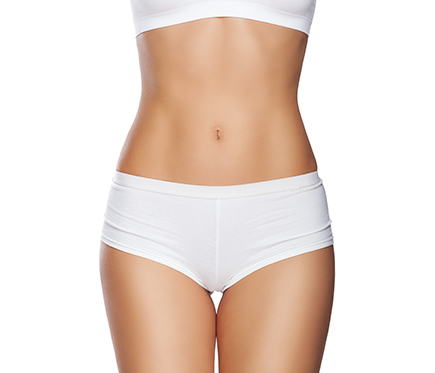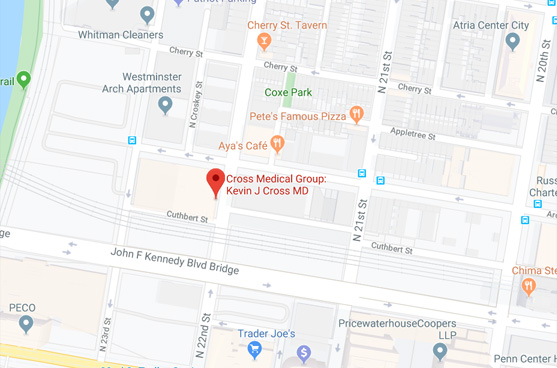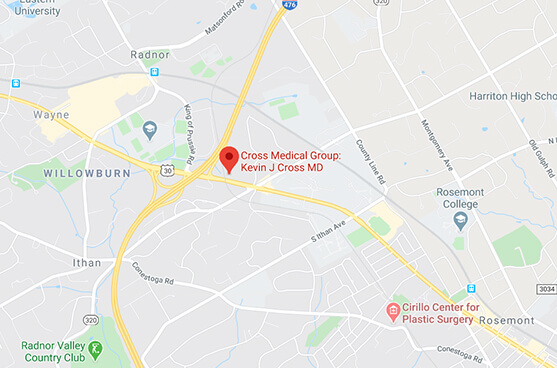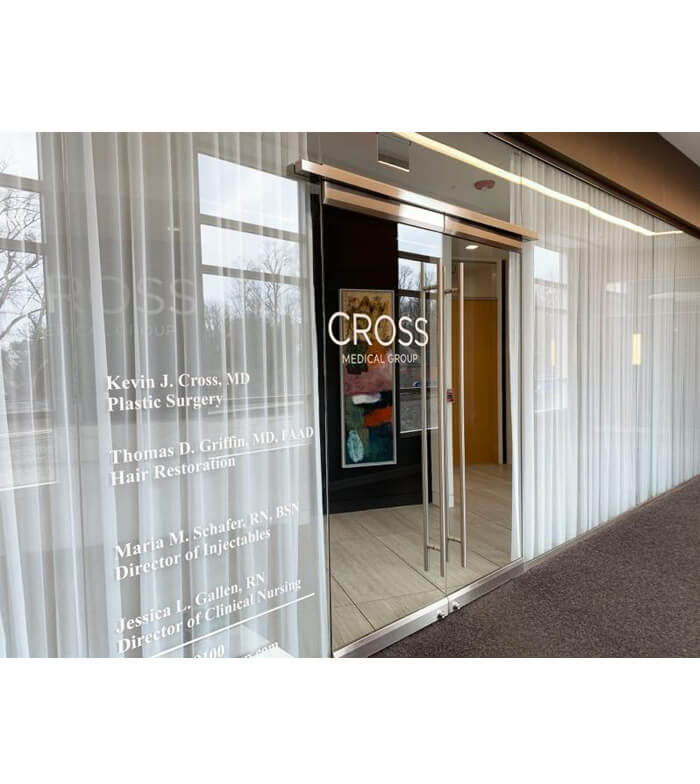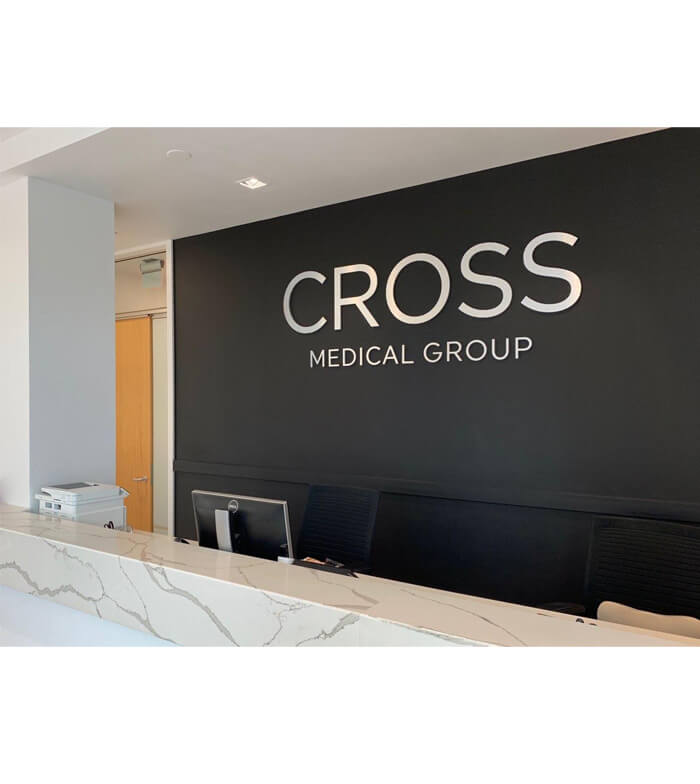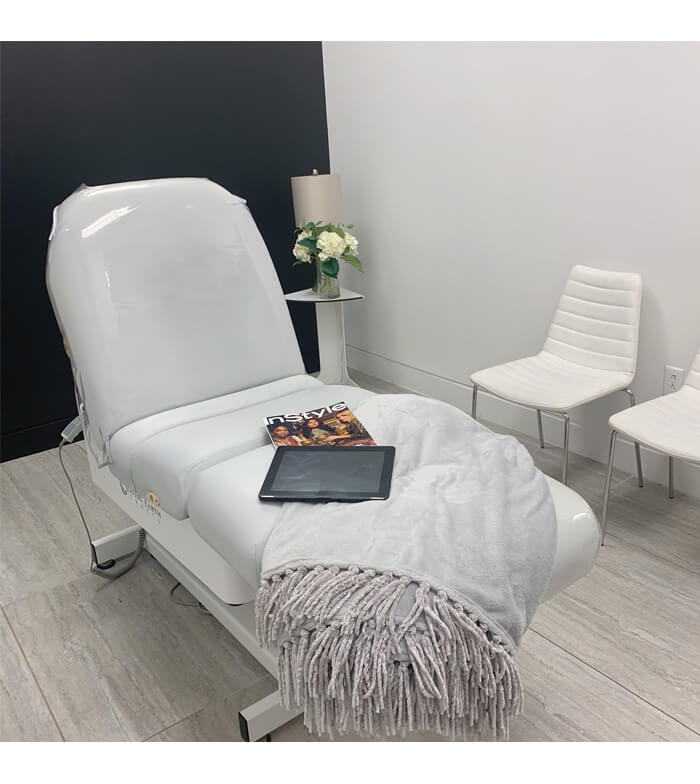Liposuction
Remove Excess Fat To Slim And Re-shape The Body With Surgery In The Philadelphia Area
Even in 2022, it's an unfortunate fact that we can't spot reduce fat with lifestyle changes, regardless of how much exercise we do or how healthy our diet is. There is, however, a way to remove diet-resistant fat deposits for good with surgery: liposuction. The Philadelphia area's Cross Plastic Surgery welcomes patients who are interested in liposuction as a way of reducing excess fat so that they can slim and reshape various areas of the body.
Everyone carries fat differently, and most of us have some problem areas where stubborn fat has the tendency to linger, whether it's the thighs, flanks, belly, upper arms, or all of the above. Liposuction allows our plastic surgeons to specifically address patients' “troublesome” areas and create natural-looking contours.
SCHEDULE A CONSULTATION
Request a consultation to learn more about liposuction in the Philadelphia area by calling Cross Plastic Surgery at (215) 561-9100 (Philadelphia) or (610) 688-9100 (Villanova), or send a message online.
What Causes Problem Areas That Can Be Corrected With Liposuction?
To understand how liposuction works, you first need to be aware of how body fat works and why stubborn “problem areas” develop. It is important to understand that each fat cell is like a tiny balloon filled with a small amount of fat. Studies have shown that we have a generally set number of fat cells in the body that remains constant throughout adulthood. Fat cells don't go anywhere when we lose weight through traditional methods. They simply shrink or grow larger. When many of these cells congregate in one area and swell to a large size, they can be difficult to shrink back down again—even with diet and exercise.
The result can be a stubborn bulge, such as the pocket of fat that causes a double chin, or more significant bulk, such as excess volume on the belly and flanks.
Since the number of fat cells stays the same regardless of how much your weight fluctuates, it can be difficult to lose weight and keep it off. This is why so many patients turn to liposuction as a way of removing the resistant fat cells from specific body areas. Liposuction enhances the shape of these areas with results that are visible right away and get rid of the unwanted fat for good.
What Type Of Body Fat Does Liposuction Remove?
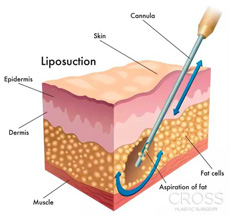
The fat most commonly addressed with liposuction is known as subcutaneous fat, lying just under the skin. This is the soft, wobbly, pinchable fat that can be seen and felt. This fat's thickness varies in different regions of the body.
Running through the fat are bands of ligaments, called septae, which originate near the muscles under the fat and connect to the overlying skin. The relationship between the thickness of the fat and the density of the bands determines how safely an area can be treated without resulting in irregularities like waviness and depressions.
Your plastic surgeon will assess any area where fat reduction is desired and determine the best technique for achieving ideal results.
One of the questions the Cross Medical Group team sometimes gets asked is, “Can liposuction remove visceral fat?” Liposuction and other types of plastic surgery cannot remove visceral fat, which is the deep, hard abdominal fat that surrounds the internal organs and creates a protruding belly. Visceral fat can only be reduced through exercise and other healthy lifestyle choices.
Some patients find that seeing their new body contours after liposuction surgery inspires them to make lifestyle changes that improve their health. This creates a positive feedback loop: As patients feel better, they grow in confidence and motivation to make more beneficial changes that shape and tone their body contours.
What Does Liposuction Involve?
Why do patients so frequently choose liposuction? As Dr. Kevin Cross has written in a liposuction textbook chapter on the surgical fat-reduction option: "Liposuction is the most commonly performed surgical procedure in cosmetic plastic surgery, and for good reason." It continues to be one of the most popular treatments in 2022.
First, the basics: Liposuction is a cosmetic procedure that involves resistant fat being suctioned out of small areas where deposits of fat have the tendency to accumulate.
Performed correctly, liposuction can be a very effective shaping tool. As a contouring strategy, liposuction can be used all over the body. It can treat the abdomen, ankles, arms, buttocks, cheeks, chin, hips, knees, neck, thighs, upper arms, and waist. By removing small amounts of fat, different areas of the body are not just “reduced,” but can be sculpted for natural-looking contours.
So how does liposuction work? Fat is physically dislodged and then removed from beneath the skin via a specialized tool inserted into the targeted area. There are also dozens of liposuction variations, including traditional liposuction, which involves manually freeing fat cells for removal, and liposuction that uses ultrasonic or laser energy to loosen the fat.
More important than the technique, however, is the surgeon performing the technique. Specific forms of liposuction are more appropriate in certain situations, but for most patients, the surgeon performing the procedure is the most important factor. Choose a board-certified plastic surgeon with significant experience in body-contouring procedures.
WHO IS A CANDIDATE FOR LIPOSUCTION?
Liposuction is considered ideal for patients who are within 30 percent of their ideal weight, who are non-smokers, who have firm and elastic skin, and who maintain a positive attitude and realistic expectations about the procedure.
Patients should be aware that liposuction is not designed to be a treatment for obesity nor a substitute for a healthy diet and regular exercise. It is not a treatment for being overweight or obese and won't substantially improve the look of cellulite. If you have health problems such as heart disease, diabetes, or a weak immune system, you may be advised to make a different choice.
Liposuction is intended for fat removal, so patients who want to tighten lax skin should consider a procedure or treatment focused on addressing sagging. Lifts and tucks accomplish this and are often paired with liposuction for comprehensive body contouring results.
THE LIPOSUCTION PROCEDURE
Nearly all forms of liposuction at Cross Plastic Surgery start with an identical first step: Your plastic surgeon will infuse the targeted tissue with a solution that helps to numb it, as well as reduce bleeding and bruising. This solution is delivered through a long, thin instrument, just thicker than a needle.
Next, the fat must be freed for removal. Historically, plastic surgeons would move a hollow tube called a cannula back and forth to release fat cells from their surrounding tissues. The freed fat would then be suctioned out through the cannula, which performed double duty as a vacuum tool. Cross Medical Group now uses a three-step process for fat reduction, which involves freeing the fat before removal to allow suctioning to occur in a gentler and more precise fashion. The remaining tissues are then blended to help ensure a smooth end result.
This three-step process involves what is known as a power-assisted liposuction (PAL) system. Vibratory mechanics loosen the fat cells, leaving blood vessels, nerves, and other important structures intact during the process. This limits trauma—and thus reduces bruising and discomfort during recovery. These freed fat cells are then removed using less suction power than is typically used for liposuction, further reducing tissue injury and recovery time. The remaining fat cells under the skin are then blended in the third step to avoid lumpiness and contour irregularities.
The entire procedure is performed using incisions that are smaller than the diameter of a pinky nail.
Other advances in technology allow for the application of energy, such as ultrasound or laser, to break up the fat cells, but these techniques tend to be over-used by doctors. This is why the Cross Medical Group plastic surgeons feel that these techniques should be used only in certain situations, because, in most cases, they increase risk of complications—including fluid collections and burns of the underside of the skin—without adding benefit to the end result.
WHAT IS RECOVERY LIKE AFTER LIPOSUCTION?
Many patients wonder: How long does it take to feel normal after liposuction? Since only small incisions are made, recovery is quick for most patients. However, recovery time after liposuction will depend on the area or areas being treated, as well as the amount of fat removed. For instance, patients tend to find that the flanks are sorer than the abdomen, and the thighs sorer than the arms. For most liposuction patients, however, significant soreness—if present at all—is limited to the first few days after their procedure. They are typically able to get back to all of their normal activities within a few days and are able to start exercising in one to two weeks.
All patients wake up after the procedure in a garment to provide support and gentle compression. This garment is similar to a medical version of SPANX and is removed in two days, at which point patients are able to shower and wash their entire body. A second garment is provided at this point, so patients can alternate by washing one while wearing the other. Unlike other practices, Cross Medical Group only has his patients wear the garments for one to two weeks at most.
WHAT KIND OF RESULTS CAN YOU EXPECT FROM LIPOSUCTION?
Patients often see improvement over their pre-treatment appearance within a week or two, but final results are not seen for a few months. Your new, sculpted body contours from liposuction will be visible once the swelling and fluid retention subside.
*Results May Vary
Before & After Photo Gallery
See for yourself the patient transformations that can be achieved by Dr. Cross and his team.
WILL THE FAT RETURN AFTER LIPOSUCTION?
The Cross Medical Group team commonly gets asked whether removing fat from one area with liposuction can cause the fat to grow back in other areas. This is a question that patients have been asking Dr. Kevin Cross since he started performing liposuction, and they still ask it as of 2022. Fat will not spontaneously show up in another part of the body if it has been removed from a different location. What can happen, however, is that fat can increase in other locations if a patient gains weight.
If weight gain used to mean that fat increased in an area, and that area is then treated with liposuction, the same weight will not easily be able to accumulate where it used to go. In that case, it may preferentially go to other areas, but this occurrence is rare. As the body ages, it may lose some of its firmness but the results from this procedure should remain.
To get the best results from liposuction in the long-term, it's recommended that you maintain a stable weight. Patients are typically encouraged to achieve their ideal body weight—or at least get close to it—and then stay at that weight for at least several months in order to ensure they are stable before choosing liposuction surgery.
ARE THERE ALTERNATIVES TO LIPOSUCTION FOR BODY CONTOURING?
Liposuction is ideal for removing excess volume, but a different body surgery approach is needed to address stretched-out skin due to aging, weight fluctuations, or pregnancy. A tummy tuck will remove sagging tissue left behind after significant weight loss or pregnancy, as well as repair separated muscles. Excess skin can also be removed via arm lift, thigh lift, buttock lift, lower body lift, face lift, and neck lift. Other body contouring procedures such as tummy tuck surgery can be combined with liposuction to maximize results. Surgical fat removal is also typically a key component of Mommy Makeover procedures, which seek to restore pre-baby contours for patients who have gone through pregnancy and childbirth.
Patients with a double chin may choose Kybella® for fat reduction. This injectable uses deoxycholic acid to break down fat cells in the submental area to sculpt a slimmer jawline area. The fat is metabolized by the body and can't return. No surgery is involved, but results are more gradual and less dramatic than possible with liposuction.
In places where septae pull the surface skin down into dimpled areas of cellulite, Cellfina® can sever the connective bands for a smoother look. Remember that cellulite is not caused by fat, but removing fat via liposuction can help to relieve a bit of the tension that makes unwanted dimpling form.
SCHEDULE A CONSULTATION
Contact Cross Plastic Surgery for more advice about liposuction in the Philadelphia area. Call (215) 561-9100 (Philadelphia) or Main Line's Villanova (610) 688-9100. You can also send a message online to inquire about a consultation, or for more information.


